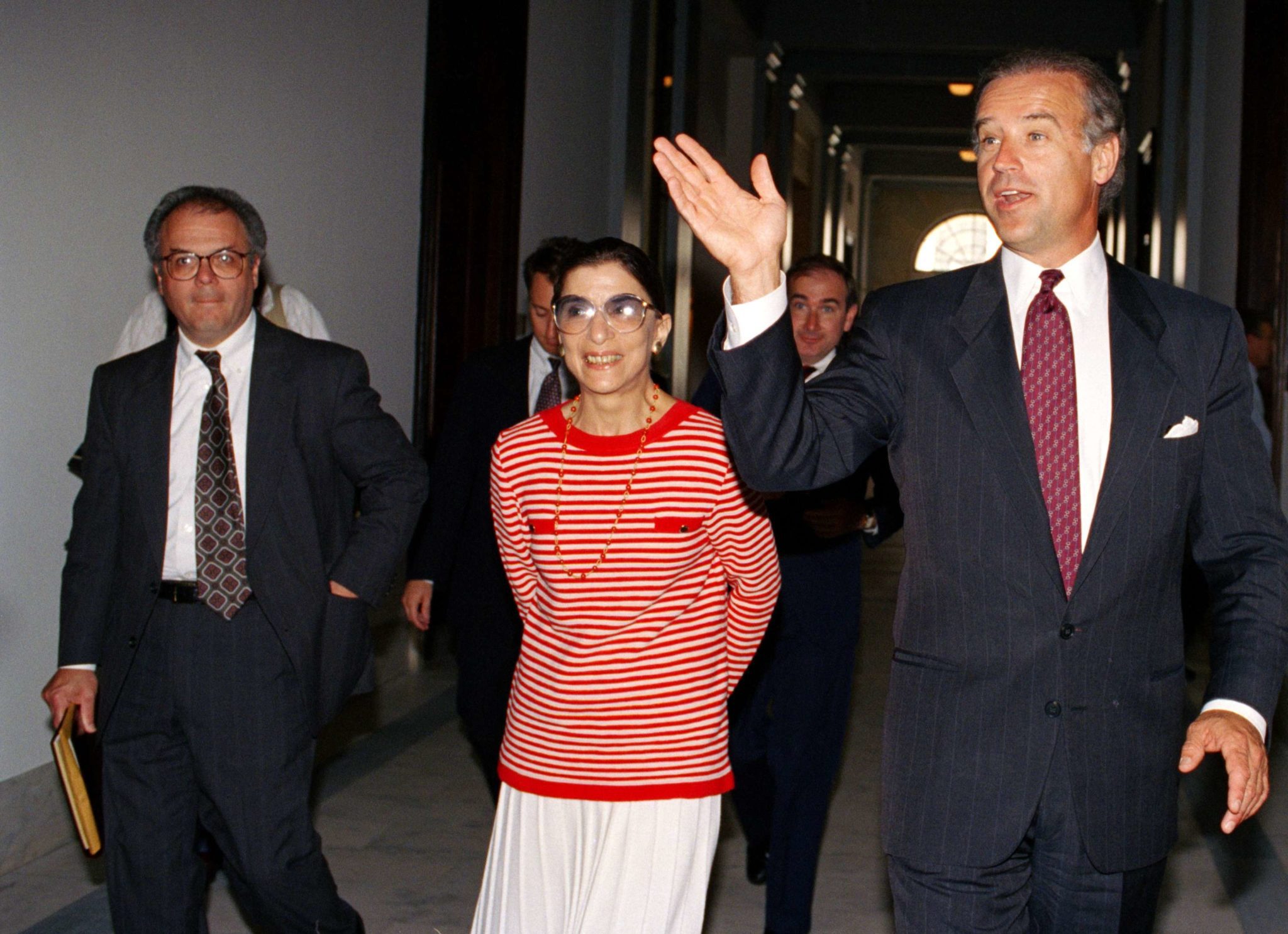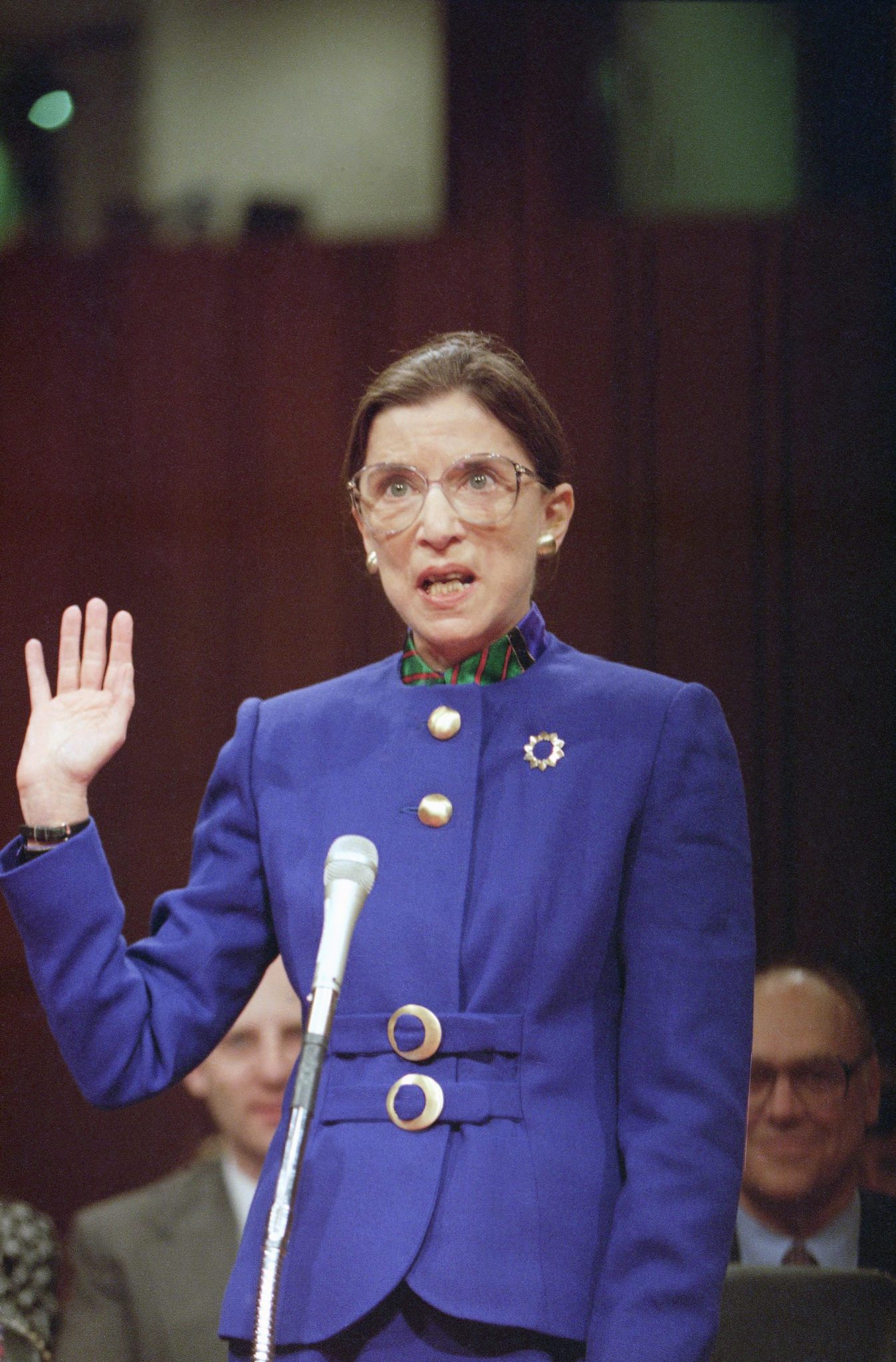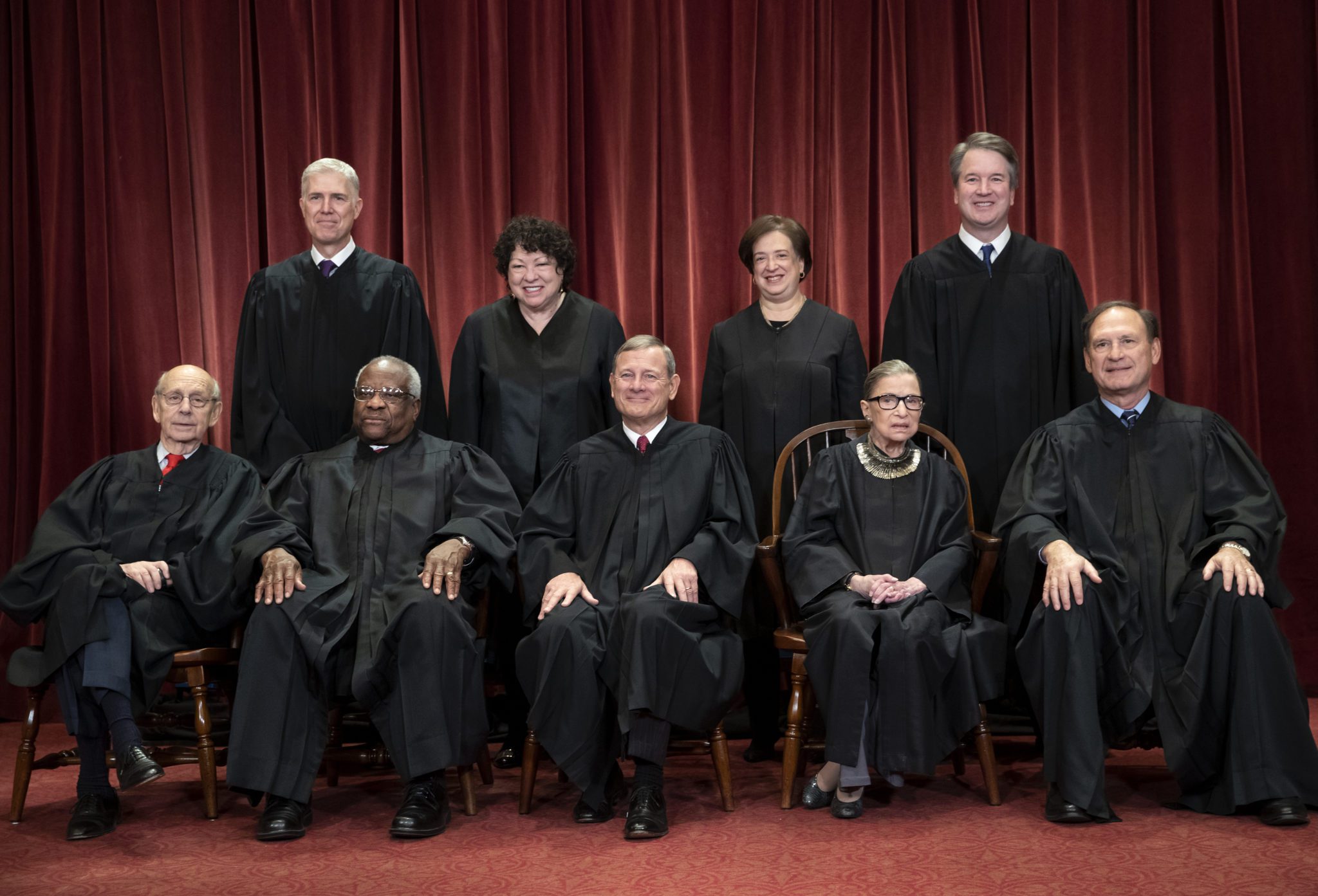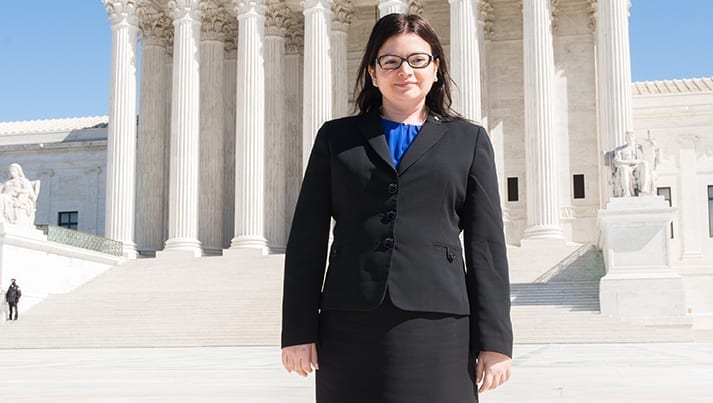The Loss of a Reproductive Rights Champion: U.S. Supreme Court Justice Ruth Bader Ginsburg
The Center for Reproductive Rights remembers Justice Ruth Bader Ginsburg, a trailblazer for women's rights and gender equality.
The death of Justice Ruth Bader Ginsburg is a profound loss for the United States Supreme Court and the entire nation. An American icon who devoted her life to advancing the liberty and equality of women, Justice Ginsburg was a beacon of civility and respect in increasingly polarized times. She died Friday at age 87 of complications from metastatic pancreatic cancer.
Throughout her pioneering career as a litigator and her 27 years on the Court, Justice Ginsburg was a reliable champion of reproductive rights, consistently casting her vote for the right to access abortion care and contraception, as well as rights to privacy and equal justice.
“Her clear, unwavering conviction that women must be given equal treatment under the law changed the legal rights of half of the nation,” said Nancy Northup, president and CEO of the Center for Reproductive Rights.

Read Nancy Northup’s statement.
Statement on the Death of U.S. Supreme Court Justice Ruth Bader Ginsburg
Statement from Nancy Northup, President and CEO of the Center for Reproductive Rights
A Warrior for Reproductive Rights
Justice Ginsburg framed the abortion issue as one of women’s autonomy and equality, writing that “legal challenges to undue restrictions on abortion procedures do not seek to vindicate some generalized notion of privacy; rather, they center on a woman’s autonomy to determine her life’s course, and thus to enjoy equal citizenship stature.” At her nomination hearing, she testified that the Constitution protects a woman’s “right to decide whether or not to bear a child,” which she explained is ”central to a woman’s life [and] to her dignity.”
In Whole Woman’s Health v. Hellerstedt (2016), a case brought and won by the Center for Reproductive Rights, Justice Ginsburg issued a pointed concurrence with Justice Stephen Breyer’s majority opinion. Echoing the Center’s arguments, she wrote that “it is beyond rational belief that [the Texas law in question] could genuinely protect the health of women, and certain that the law ‘would simply make it more difficult for them to obtain abortions.'” She called out the laws for what they are: “Targeted Regulation of Abortion Providers [TRAP] laws… that do little or nothing for health, but rather strew impediments to abortion.”

In the Center’s June Medical Services v. Russo (2020) case, decided this summer at the end of the recent Supreme Court term, she joined Justice Breyer’s plurality opinion that struck down an identical Louisiana law and reiterated that these laws impose severe burdens on pregnant people for no legitimate medical reason.
The cases Stenberg v. Carhart (2000) and Gonzales v. Carhart (2007) centered on, respectively, state and federal bans of the standard procedure of abortion care after about 15 weeks of pregnancy. As the Court struck down a state ban in Stenberg, Ginsburg wrote in a concurrence that the law sought “to chip away at the private choice shielded by Roe v. Wade,” and thus had the improper purpose of “placing a substantial obstacle in the path of a woman seeking an abortion.”
In Gonzales, decided seven years later, after the Court’s membership had changed, a majority changed course and upheld a similar federal ban. Ginsburg said in her dissent, “the Court, differently composed than it was when we last considered a restrictive abortion regulation, is hardly faithful to our earlier invocations of the rule of law.” She added that the decision “cannot be understood as anything other than an effort to chip away at a right declared again and again by this Court—and with increasing comprehension of its centrality to women’s lives.”
In her dissent in Burwell v. Hobby Lobby (2014), she emphasized that access to contraception should be framed as an issue of fundamental equality. More recently, she issued a pointed dissent against the majority opinion in Trump v. Pennsylvania (2020) that allowed companies broad scope to deny coverage for birth control, writing: “Today, for the first time, the Court casts totally aside countervailing rights and interests in its zeal to secure religious rights to the nth degree.”

Fighting Sex-based Classifications
Justice Ginsburg helped establish protections against gender stereotyping, authoring the majority opinion in U.S. v. Virginia (1996), which overturned the Virginia Military Institute’s male-only admissions policy. That ruling broadly rejected sex-based classifications that rely on stereotypes or “overbroad generalizations about the different talents, capacities or preferences of” certain groups, or “inherent differences” between men and women. Sex-based classifications, she said, must never be used “to create or perpetuate legal, social, and economic inferiority of women.”
Her influential dissent in Ledbetter v. Goodyear Tire and Rubber Company (2007) pointed out that discriminatory pay disparities are often hidden from sight and may not be discovered until long after the fact. That dissent inspired Congress to enact the Lilly Ledbetter Fair Pay Act of 2009, which allowed more victims of sex-based wage discrimination to have their day in court.
A Groundbreaking Career
President Bill Clinton nominated Ruth Bader Ginsburg to the Supreme Court in 1993, after she had served for 13 years on the Court of Appeals for the D.C. Circuit. “It is essential to woman’s equality with man,” she told the Senate during her confirmation hearings, “that she be the decisionmaker, that her choice be controlling. If you impose restraints that impede her choice, you are disadvantaging her because of her sex.” The Senate voted 96-3 to confirm her as the nation’s 107th Supreme Court justice.
Her appointment to the nation’s highest court was the culmination of a groundbreaking legal career. Early on, Ginsburg was an attorney and co-founder with the ACLU’s Women’s Rights Project, where she fought to persuade resistant courts to view laws that restrict women’s reproductive rights through the lens of equality, liberty, and privacy. She pursued creative litigation strategies to secure legal protections for women, often by focusing on circumstances in which sex discrimination impacted men.
She explained, “Our strategy was the soul of simplicity. It was to go after the stereotypes that were written into law and to show that men could be disadvantaged by the stereotype, as well as women…We wanted people to be judged by what they do, by the functions they perform, and not by gender.”
In 1972, while at the ACLU, she wrote a groundbreaking brief in the case of an Air Force Captain who challenged her forcible discharge for refusing to end her pregnancy. Ginsburg’s brief in the case, Struck v. Secretary of Defense, framed pregnancy discrimination as sex discrimination. She connected the right to liberty and equality as the single right of “equal autonomy,” outlining how denying women equal treatment constrains liberty, and vice versa.

Even before that, Ginsburg was blazing trails, beginning as one of only nine women in her Harvard Law School class. Later, as a professor at Rutgers Law School, she joined with female colleagues to file an Equal Pay Act complaint over disparities in teaching pay, eventually forcing the university to settle.
A Striking Legacy
Few U.S. jurists have been as celebrated as Justice Ruth Bader Ginsburg. Her friend and colleague Justice Antonin Scalia noted that in the law of women’s rights, Ginsburg was “the Thurgood Marshall of that cause.”

Justice Ginsburg’s leadership on issues of women’s rights and equality, her trailblazing personal history, and her professional longevity combined to bring her rare prominence in popular culture. Because of her position in the zeitgeist, she acquired the moniker “RBG,” putting her in the very small corps of monogrammed Americans: JFK, FDR, MLK, and few others.
In recent times, she was bullish on the #MeToo movement, telling The Atlantic: “I think it will have staying power because people, and not only women, men as well as women, realize how wrong the behavior was and how it subordinated women.”
Justice Ginsburg will be remembered long after her death, through the cases she brought as a litigator and through her jurisprudence. She will also live on in popular culture, through books like the bestselling Notorious RBG, documentaries like RBG, and feature films like On the Basis of Sex, as well as action figures, t-shirts emblazoned with her image, and much more.
When asked how she wanted to be remembered, Justice Ginsburg said this:
“Someone who used whatever talent she had to do her work to the very best of her ability… And to help repair tears in her society, to make things a little better through the use of whatever ability she has.”
TIMELINE
- 1933: Born Joan Ruth Bader in Brooklyn, NY
- 1954: Earns bachelor’s degree in government from Cornell University, first in her class; marries law student Martin D. Ginsburg
- 1959: Graduates from Columbia Law School first in her class after having transferred from Harvard Law
- 1959-61: Clerks for U.S. District Judge Edmund L. Palmieri
- 1963-72: Teaches at Rutgers University Law School
- 1972-80: Teaches at Columbia Law School; becomes the university’s first female tenured professor
- 1970s: Serves as the director of the ACLU’s Women’s Rights Project; argues six landmark cases on gender equality before the U.S. Supreme Court
- 1972: Writes brief in Struck v. Secretary of Defense that frames pregnancy discrimination as sex discrimination
- 1980: Appointed by President Jimmy Carter to U.S. Court of Appeals for the District of Columbia
- 1993: Appointed by President Bill Clinton to U.S. Supreme Court, filling seat vacated by Justice Byron White
- 1996: Authors majority opinion in U.S. v. Virginia overturning VMI’s male-only admissions
- 1999: Wins American Bar Association’s Thurgood Marshall Award
- 2000: Concurs in Stenberg v. Carhart striking down an abortion ban
- 2000: Dissents in Bush v. Gore
- 2007: Dissents in equal-pay case Ledbetter v. Goodyear Tire and Rubber Company
- 2007: Dissents in Gonzales v. Carhart where decision upheld an abortion ban
- 2014: Dissents in Burwell v. Hobby Lobby; frames contraception as an equal rights issue
- 2015: Votes with majority to legalize same-sex marriage in Obergefell v. Hodges
- 2016: Votes with majority to overturn a Texas abortion restriction in the Center’s case, Whole Woman’s Health v. Hellerstedt
- 2016: Releases memoir My Own Words
- 2020: Votes with plurality in Center’s TRAP law case June Medical Services v. Russo
- 2020: Dissents in Trump v. Pennsylvania decision that prioritized employers’ religious beliefs over employees’ reproductive autonomy

